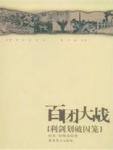Chapter 1 Primer
After the Battle of Wuhan, the War of Resistance Against Japan entered a stalemate.
After the failure of the plan to force the national government to submit by force, the Japanese government adopted a strategy of "military strikes as a supplement and political strikes as the main".As a result, while the Japanese army shifted from strategic offensive to strategic defensive, its combat focus also shifted from the frontal battlefield to the occupied area.In order to alleviate the contradiction of insufficient manpower and material resources, the Japanese army was forced to adjust the strategic policy of a quick battle to a strategic policy of a protracted war, and transferred the main force to the occupied area to ensure the stability of the "backyard".
After the Eighth Route Army completed the task of cooperating with the Kuomintang in frontal combat, it switched to guerrilla warfare behind enemy lines, established anti-Japanese base areas behind enemy lines, and developed its armed forces, which dealt a huge blow to the Japanese army.As Mao Zedong pointed out, the Eighth Route Army "does not play any decisive role in decisive battles, but has its own specialty, in which it can definitely play a decisive role, and this is truly independent mountain guerrilla warfare."
One of the main forms of struggle behind enemy lines is traffic warfare.
The line of communication is the lifeblood of the Japanese army.The struggle around traffic in the enemy's rear in North China constituted the main theme of the War of Resistance in North China.
After the Eighth Route Army moved to the enemy's rear for the War of Resistance, it began to attack the Japanese army's communication lines. In February, April, and July 1938, the Shanxi-Chahar-Hebei Military Region launched three consecutive raids on important communication lines such as the Ping-Han Line. In December 1939, the 129th Division launched the Hanchang Road raid.In the nearly one year from the second half of 1939 to the first half of 1940, 60% of all struggles in the Shanxi-Hebei-Henan Military Region were traffic warfare.
The actions of the Eighth Route Army posed a huge threat to the traffic line regarded as the lifeline by the Japanese army, but the Japanese army did not give up.
After a period of "sweeping" and anti-"sweeping" struggles, after entering 1940, the Japanese army expanded eastward relying on Pinghan Road, and successively built trunk roads such as Shijiazhuang to Nangong, Neiqiu to Julu, Xingtai to Weixian, and Handan to Daming. And many branch lines, the southern Hebei base area is also divided into many small pieces.At the same time, the Japanese army was actively building more strongholds and roads on the west side of the Ping-Han line, strictly blocking the traffic between Taihang and southern Hebei, in an attempt to narrow the scope of activities of the Eighth Route Army.In the Taihang and Taiyue mountainous areas, the Baijin and Lin (Fen) Handan (Dan) railways were rushed to be repaired in an attempt to separate the Taihang and Taiyue areas.
Liu Bocheng once compared the new tactics of the Japanese army to the fact that the enemy wants to use railways as pillars, roads as chains, and strongholds as locks to create a prison cage, and put us soldiers and civilians in it to be executed in a hurry.
The large-scale road-building operations carried out by the Japanese army in North China not only had military significance, but also had political, economic and cultural significance.
The Japanese army organized and carried out this traffic war in North China with a strategic vision.
Without breaking the "Prisoner Pet", the Eighth Route Army cannot survive.
As the saying goes: The Tao is one foot tall, and the devil is one foot tall.
After history entered 1940, around the "road", the two sides of the struggle launched a new contest.
In the autumn of 1940, it was a shocking event that shocked the world and made the Japanese invaders in North China terrified.An eventful day of restlessness.
In August of that year, in order to break the blockade of the occupied areas by the Japanese army, stop the countercurrent of surrender within the Kuomintang, and arouse the anti-Japanese enthusiasm of the broad masses of the people, the Eighth Route Army launched the Hundred Regiments Campaign with the purpose of breaking the communication line.The battle lasted for more than two months, and more than 1,800 battles were carried out, killing and injuring more than 20,000 Japanese and puppet troops, destroying more than 470 kilometers of railways, and interrupting the Zhengtai Railway for more than a month. Biggest battle ever.The battle was divided into two stages. The first stage was from August 20 to September 10, with the goal of destroying the railway; the second stage was from September 20 to October 20, with the goal of removing the strongholds on both sides of the railway.After the completion of the second phase of tasks, the Eighth Route Army fought against the enemy for a long period of "mopping up" and countering "mopping up".
The Hundred Regiments Campaign is a glorious chapter in the history of the Chinese Anti-Japanese War. It shows that the armed forces led by the Chinese Communist Party not only developed and strengthened themselves in the arduous struggle of the Anti-Japanese War, but also made great contributions to the victory of the Chinese Anti-Japanese War and the victory of the world's anti-fascist struggle. contribution.

